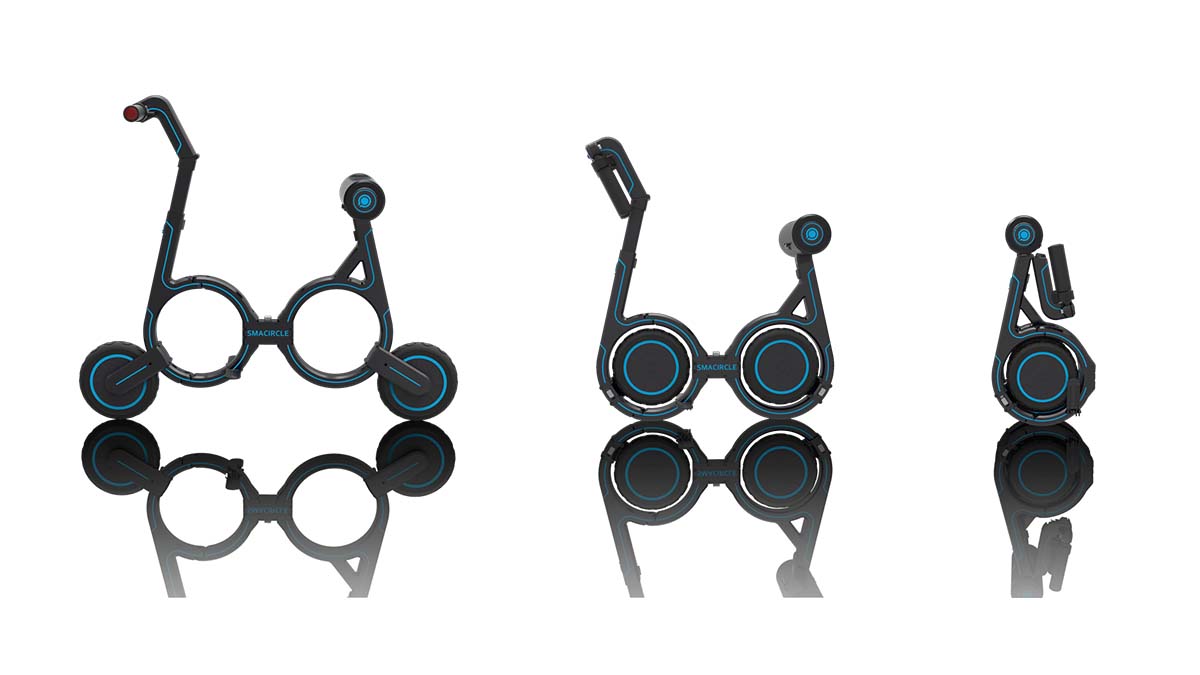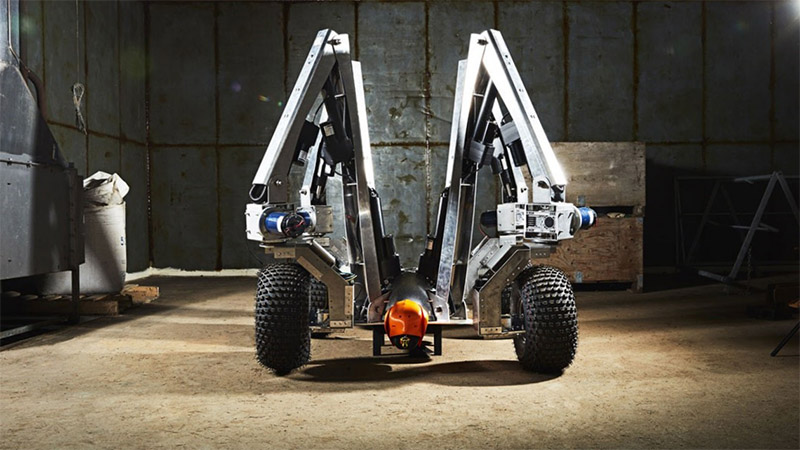The digital bike
Fully networked on two wheels
The (electric) bike of the future makes route announcements, monitors its user’s heart rate, is connected via mobile phone and even arranges an appointment with a mechanic when its time for a tune-up. Sounds crazy? But it’s technically already possible. The digitization megatrend has long since reached the bicycle.

©️smacircle
At the beginning of February, one of these digital bicycles of the future was tried out on a test course at the Digitize-Arena at the ISPO, the International Trade Fair for Sporting Goods and Sportswear, in Munich. The mini E-bike “Smacircle S1” has no pedals and is reminiscent of a futuristic scooter. Equipped with a USB slot, it can be connected to the rider’s smartphone, making navigating and connecting the bike to fitness gadgets a breeze. And you use your smartphone to lock and unlock the wondrous gadget, too.
A digital bike in your backpack
Looking at it, the bike doesn’t really make you think of a classic bicycle. The energy source is a battery integrated under the saddle. Working in conjunction with the motor, the battery ensures that even without pedaling you can ride at speeds up to 20 km/h. And to top it all off, at the end of your ride you can fold the innovative new bike up and stash it comfortably in your backpack. It weighs only about 7.5 kilograms and when folded has the dimensions 190 x 290 x 540 mm. All this should sound pretty exciting, especially for commuters in the city who for at least part of their commute are traveling by public transport.
Innovations originating in the automotive industry
The bicycle market is changing a lot. Above all, this is thanks to the e-bike boom. In Germany alone, the number of electric bicycles sold annually is approaching the one million mark. This trend also means that completely new players are elbowing their way into the market, some of whom come from the automotive industry, such as Bosch, Brose or Continental. They are bringing with them solutions that have long been standard in the automotive sector, for example a recently introduced ABS system for e-bikes. Connectivity is becoming more and more comprehensive as well.
The e-bike goes online all by itself
"The connectivity of the individual parts of the bike – with each other and with the Internet – is an interesting topic," says Maximilian Topp from the bicycle manufacturer Sram in an interview at ispo.com. "Navigation on the e-bike display already exists. I could imagine that e-bike development will continue to follow the smartphone’s lead and allow the bike go online independently. This would be allow such functions as active traffic routing, tracking, theft protection and contactless payment transactions in public transport, for instance.”
And it sets up its own appointment for a tune-up
Another functionality that is often in demand is a connection between the bike and fitness gadgets such as heart rate monitors, which accurately represent the distance traveled and monitor body functions. According to Maud von Hoff from the bicycle manufacturer Rotwild, in the future your digital bike will also contact the workshop on its own: "The link with customer service will certainly be interesting in the future, when the bike will signal its own need for a check-up."
Digitally personalizing the perfect bike
But even before the actually purchasing a bicycle, digitization can already provide for a new dimension of customer experience. For example, through the use of a body scan that can be taken at selected dealers, the Smartfit system offered by the German company Radlabor allows the user to determine the optimal frame size for his body size, as well as his ideal sitting position. Based on this data, the company then searches thorough a bicycle database containing information on more than 100 brands to select the perfect bike for that individual customer.
Digital complete systems and smartphone apps
For more and more customers, digital networking possibilities are playing a key role in their purchase decision. Complete systems displaying all the bike’s key parameters, plus navigation, are gaining in popularity. Depending on the brand of motor, the COBI, Nyon or Teasi Volt systems, for example, are recommended. The cost of such a system is between 250 and 350 euros. For customers who like things simpler, it’s possible to connect an intelligent smartphone app to the rain-protected display on the handlebars. Examples include the Impulse EVO & Naviki system on bikes from Kalkhoff and Raleigh, or the Flyer FIT Display in conjunction with the komoot app.
Your helmet is networked? Then stream your trip!
A digital solution is also available for those cycling enthusiasts who only want to have route information whispered in their ear so they can chat with their fellow cyclists riding alongside them. New helmets with integrated Bluetooth systems, speakers and microphones make this possible. They connect to mobile phones and navigation systems, so that Alexa or another virtual assistant can make route announcements along the way. With the X1 helmet from the company Sena, a group of up to four people can chat among themselves while on the road, thanks to an intercom system with a range of up to 900 meters. For an investment of about 300 euros, you can even buy a helmet with an integrated camera that you can switch on to live-stream the bike trip on social media.
Smartphones: the bike trip’s nerve center
Living in the boom times of Instagram, Facebook and co., many cyclists find it increasingly important that they are permanently networked. For them, the e-bike complete system or smartphone becomes the digital bike’s mobile control center – whether they’re in the middle of a virtual bike race on a hometrainer such as zwift.com or actually live, in the saddle, on the road. "Sophisticated navigation tools and bicycle-specific tools for route planning are one thing, but the idea of ‘community’ is another," says Sandra Wolf, Managing Director of the e-bike manufacturer Riese & Müller. “You can show people where you were, share pictures, exchange ideas… For e-bike riders, e-bike control and evaluating bike data are also interesting."
Health and networking with the smart home
Permanent monitoring of all fitness and health parameters is almost standard, as it has become with jogging. The Nyon by Bosch E-Bike Systems is a navigation system and fitness tracker in one, offering Internet access. From the model year 2019 onwards, the Kiox on-board computer, in which a heart rate monitor is networked via Bluetooth, will be available especially for the needs of more ambitious riders. The possibilities for the digital bike are almost inexhaustible. And in the future, it will also be possible to network your bike with your smart home – so when you get back from your bike tour, your protein shake or carbohydrate-rich food will already be prepared and waiting for you.
Who are we? How do we live today? And how will digitization change our lives? How the future will unfold is preoccupying society more than ever, with engineers, doctors, politicians – each one of us, in fact – seeking answers. This report is one of many contributions that shed light on the theme “Digitized Society” from a new, inspiring perspective. We are publishing them here as part of our series “Impact”.
Our great sense of curiosity at Vontobel means we are attentively following scientific research in many key areas. This helps us recognize new investment opportunities early on. That’s why our thematic portfolios and thematic investments also reflect megatrends such as digitization, as we consider companies that are making valuable contributions to solving global challenges.
I am interested in thematic investments
I am interested in thematic funds








